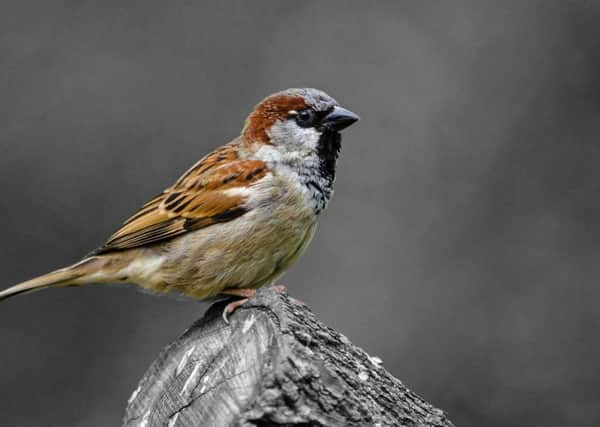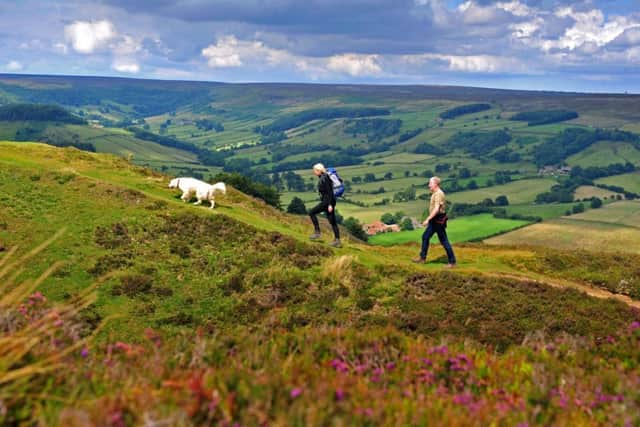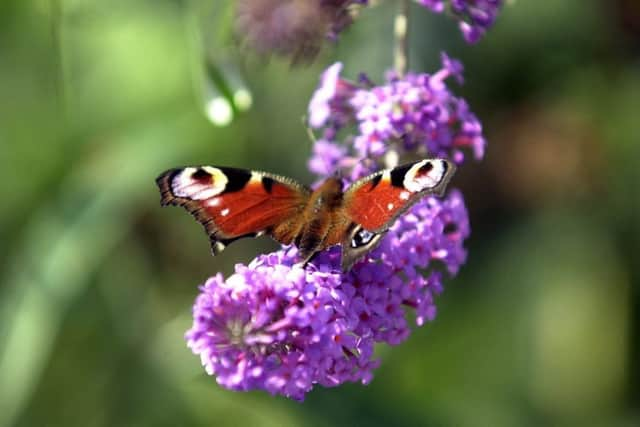How nature is fighting back against climate change


“I’m not bothered about making friends,” says Chris Thomas, as he leans back on the fence at his favourite spot in his outdoor laboratory. “I just want people to think about their assumptions.”
Thomas was the first scientist to estimate how climate change may endanger biodiversity globally. But with a controversial new book, the award-winning ecologist is now leading the argument that nature is in fact adapting to the warmer world far more than most people think.
Advertisement
Hide AdAdvertisement
Hide AdIt is a good thing the University of York professor doesn’t want to make any friends; during our chat he takes pot shots at Britain’s Countryfile-esque view of nature, the environmental movement and the conservation elite’s hostility to invasive species such as the parakeets that have made their home in the UK but which are facing a cull.


Later, over a cup of tea in the kitchen of his 19th-century farmhouse, he confesses – only half-jokingly – that his nightmare would be hearing that Donald Trump had tweeted praise of his book, Inheritors of the Earth. While this would be great for sales, it would be a bit awkward to be endorsed by a climate change denier – which Thomas certainly isn’t.
He accepts that the atmosphere is warming and our oceans acidifying, with humanity well on the way to causing the sixth mass extinction in the history of the planet. However, Thomas wants to focus on a more hopeful story that has been missed. While some species are dying out, others are changing their behaviours to survive, new species are evolving and the number of species on the planet in the distant future may well equal or even exceed the number lost now.
After all, he says, if nature survived the asteroid that wiped out the dinosaurs, it should be able to survive the work of a bunch of apes.
Advertisement
Hide AdAdvertisement
Hide AdThomas lives on a smallholding just outside Selby and as he gives me a tour, he stops at the point where the trees and bushes he has planted suddenly give way to wheat fields that stretch across the horizon. Dominating this “landscape of despair” are the chimneys of Drax power station.


“You bring your average conservationist and stick them in the middle of this, and they would regard it as a thoroughly impoverished and damaged landscape,” he says. “In reality, about a third of all British species live in this landscape.
“A high proportion of these species simply wouldn’t even be here if humans hadn’t transformed the environment. Yet we are taught all the time to think of the impact of humans as negative. Similarly, we are taught to think of the species brought over by the Romans, like the rabbit or the brown hare, as native species. If it has come over more recently, we are likely to be told to disapprove of it because it will overrun the native species. Most of the time, if a species spreads from another part of the UK, we are told that’s ok.”
As we walk on, Thomas points out ringlet butterflies darting between the wild flowers. Above us, I swear I catch a glimpse of one of the house sparrows that have made a home in one of Thomas’s farm buildings. I nearly fall into a pond full of what I am told is Tasmanian or New Zealand pygmy weed that has found its way here from the other side of the world.
Advertisement
Hide AdAdvertisement
Hide Ad“The house sparrows wouldn’t even be here without us humans. They followed the spread of urban life from the Middle East millennia ago,” he says. “It comes close to being the most successful bird species in the world, yet we think of it as being native here. Forty to 50 years ago, there wouldn’t be any records of ringlets in this part of the country, but when the climate started to warm they moved in.


“There is close to universal condemnation of the pygmy weed by the conservation community, yet when I see that a rare marsh orchid grows in it and water voles burrow into it when the drainage ditches dry out in the summer, I can see that there are as many negatives as positives. If it was native species doing the same role we would emphasise the positives. If it is a foreign plant then we emphasise the negatives.”
But is evolution itself speeding up thanks to human actions, as Thomas argues? He bends down and holds between his fingers a rather unremarkable flower. “This is known as yorkwort,” he says. Its evolution began 300 years ago when the flower that became known as Oxford ragwort was picked from the slopes of Mount Etna by a British collector who took it back to Oxford. It escaped from the Botanic Garden there and spread via the railways. In the 1970s, a new hybrid species came into existence when ragwort interbred with groundsel in the city of York. Another new hybrid species has been spotted in Wales and briefly in Edinburgh.
“This process happened around 10,000 times faster than the rate at which new species are expected to form, and human actions are responsible,” Thomas says. “Due to the way technology is developing it is very hard for us to conceive what it will be like in 500 years’ time. It is very likely that the set of species that exist now will have changed again.
Advertisement
Hide AdAdvertisement
Hide Ad“But our rare species are our biological toolkit. If a species goes extinct, we are giving away a part of our toolkit without knowing whether it will be very useful. Seed vaults may be an option, but it will be difficult to conceive how a particular piece of frozen material might be useful.


“Given our increasing ability to manipulate genes, we may be able to make things beyond what biologically exists today.”
We catch our breath by a couple of nonchalant-looking white horses and I take my chance to ask Thomas the big question that has been bothering me. What does he actually want us to do?
“I want us to do nothing,” he says. “I want us to behave like we really understand that the natural world is a set of dynamic biological and evolutionary processes, which humans and everything that we do are a part of, and that we need to move with the changes in that system rather than try and maintain it.
Advertisement
Hide AdAdvertisement
Hide Ad“From the biological perspective, over the last 20,000 years the set of species here will have completely replaced itself three or four times – maybe more – and it will go on changing. To keep things as they were during the lifetime of an average human could work in a period of environmental stability, but when the environment is changing as fast as it has been over the last century it is not credible.
“If you keep trying to do this, you will be forever fighting a losing battle – all the indicators are getting worse, because nature will always be moving on from the base line you have drawn. If we take a more positive approach and embrace the changes that are happening, we can start winning.”
Inheritors of the Earth: How Nature Is Thriving in an Age of Extinction by Chris D Thomas is published by Penguin, priced £20.